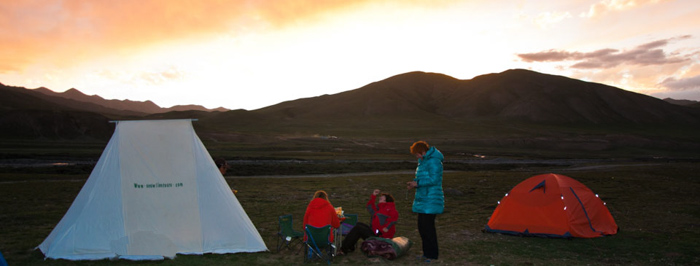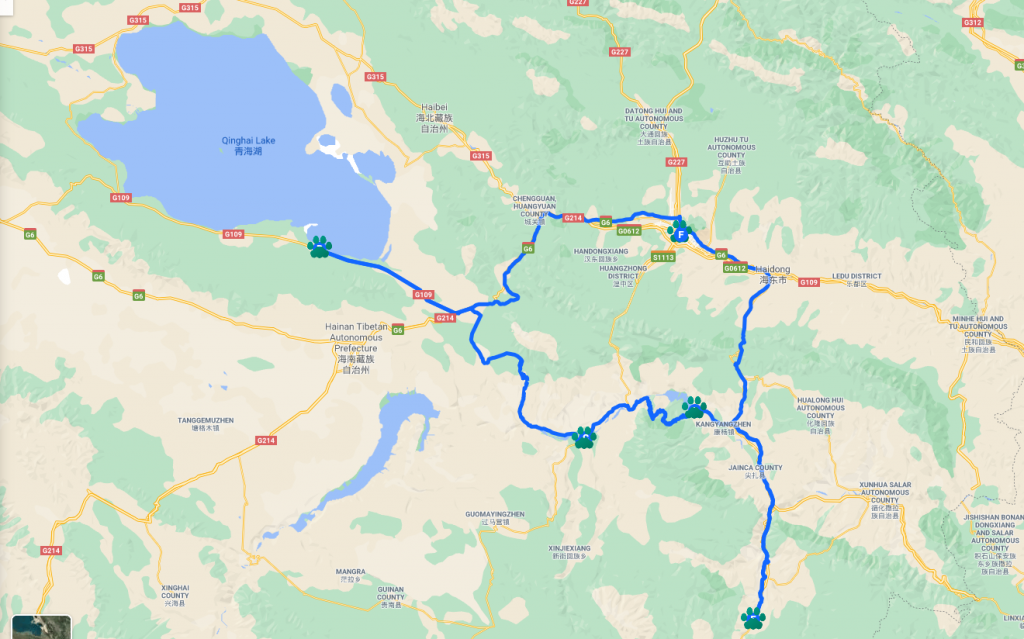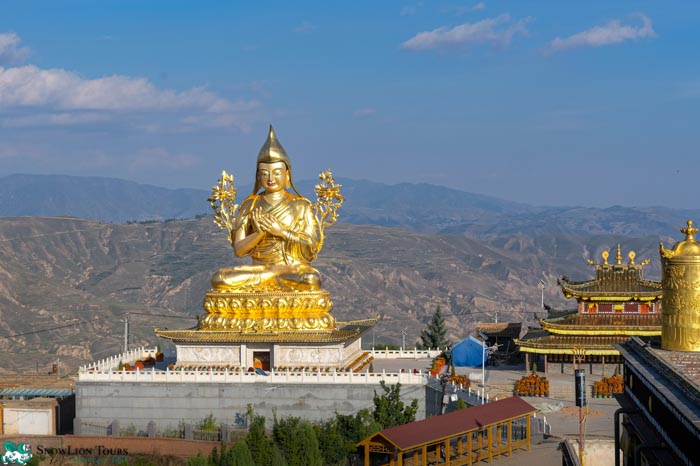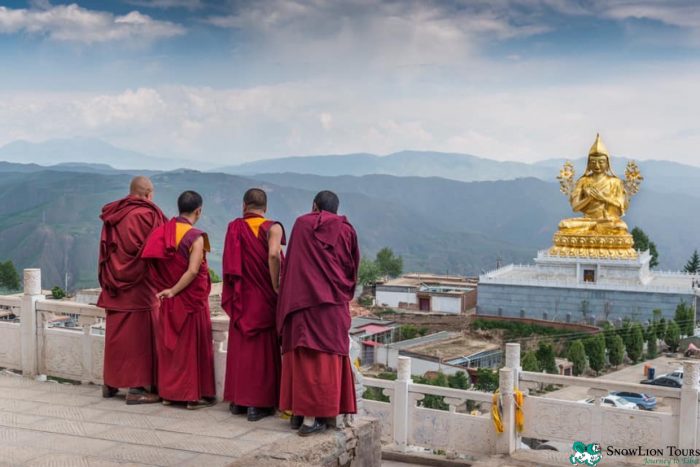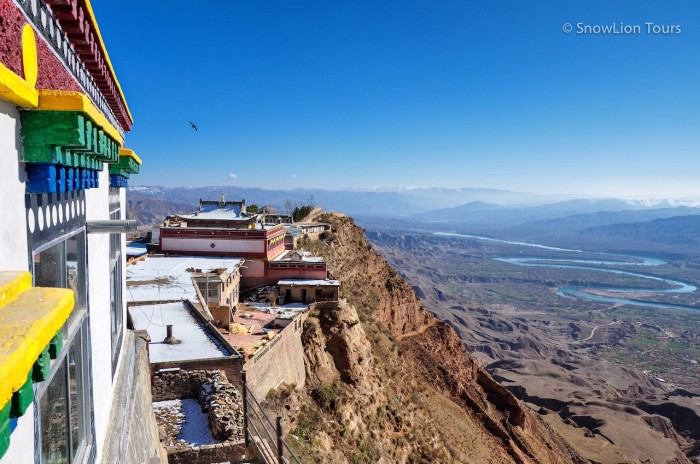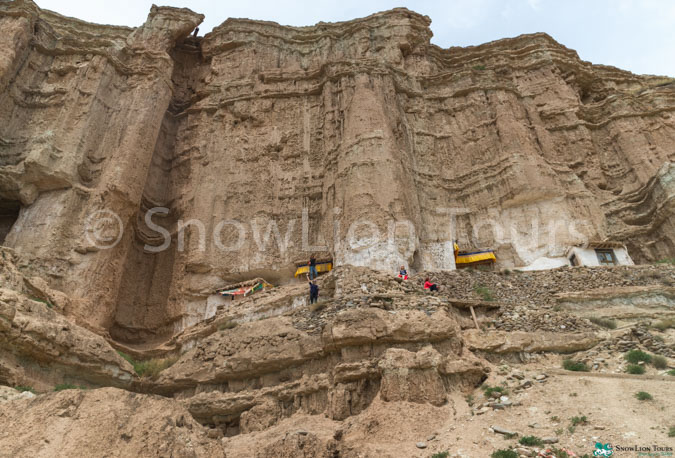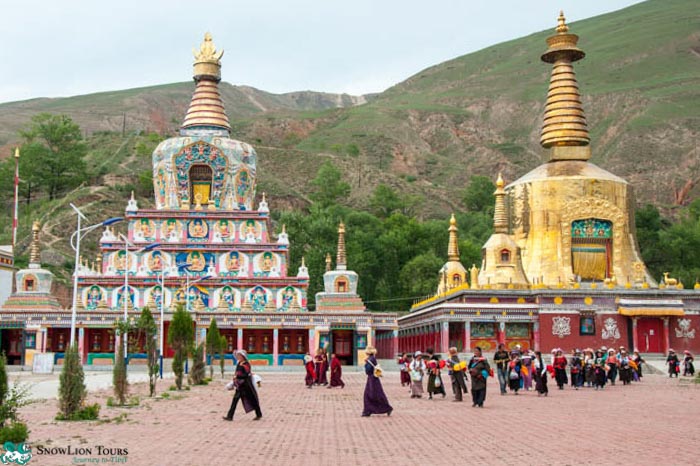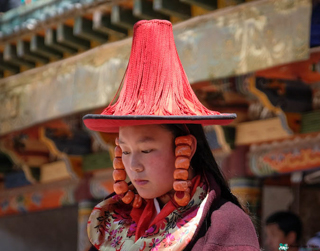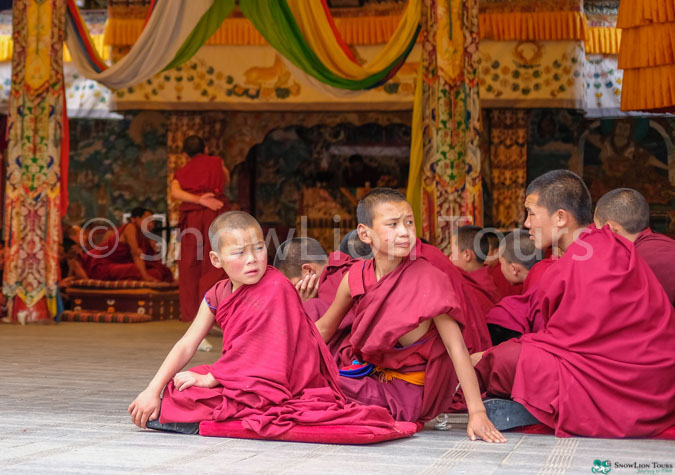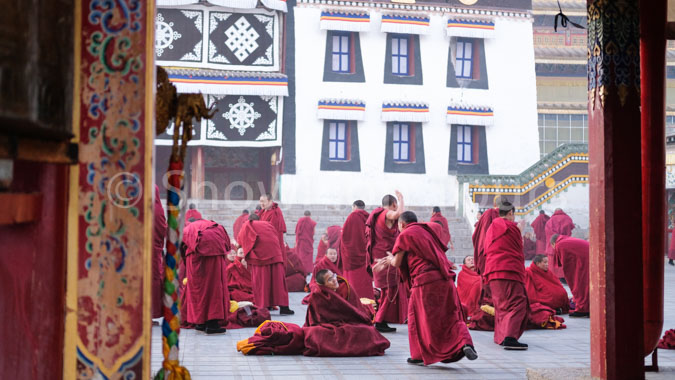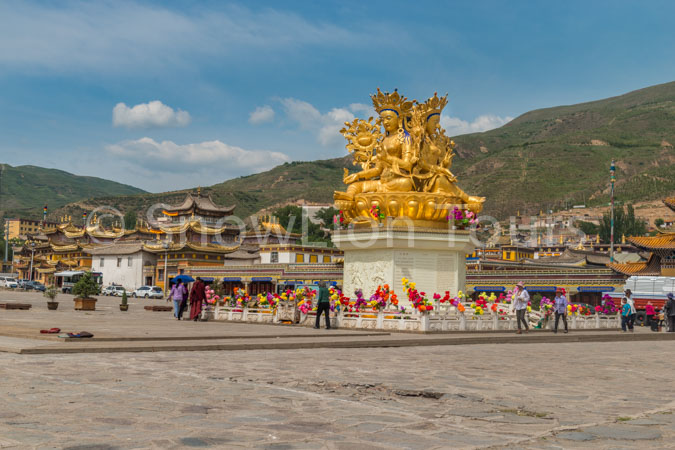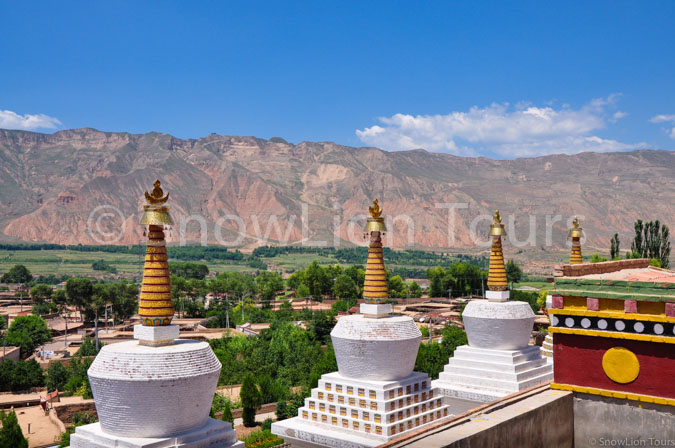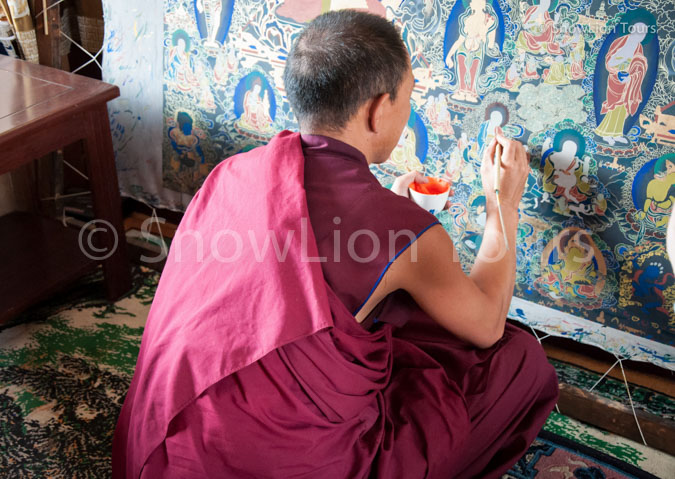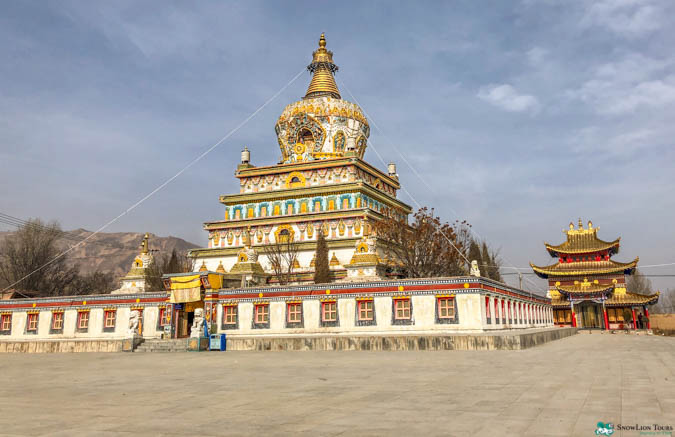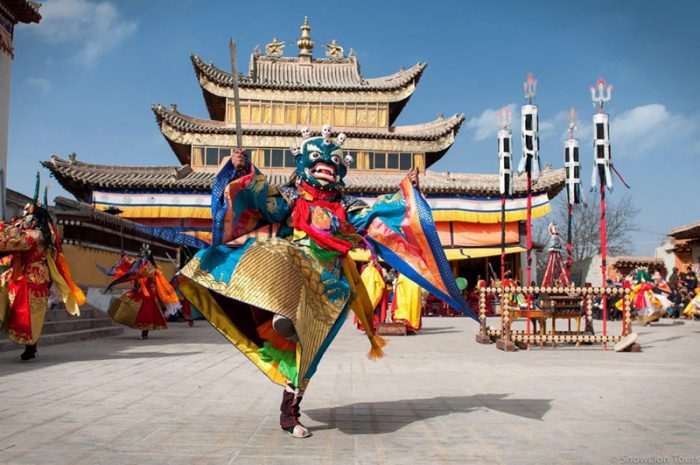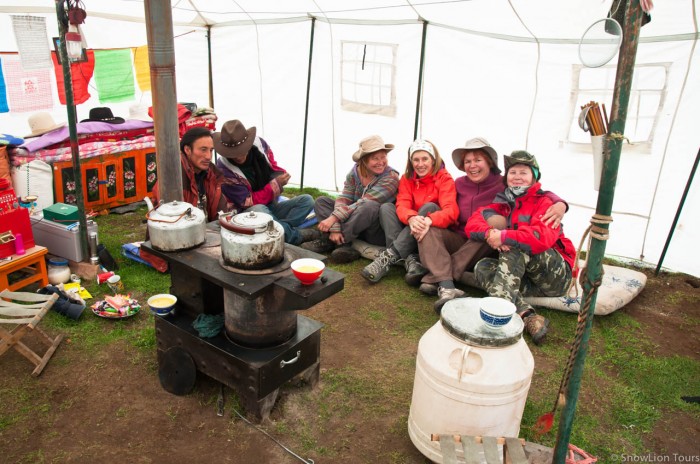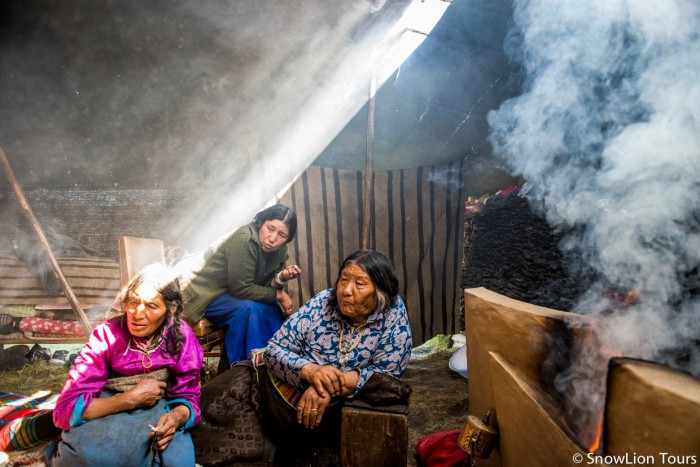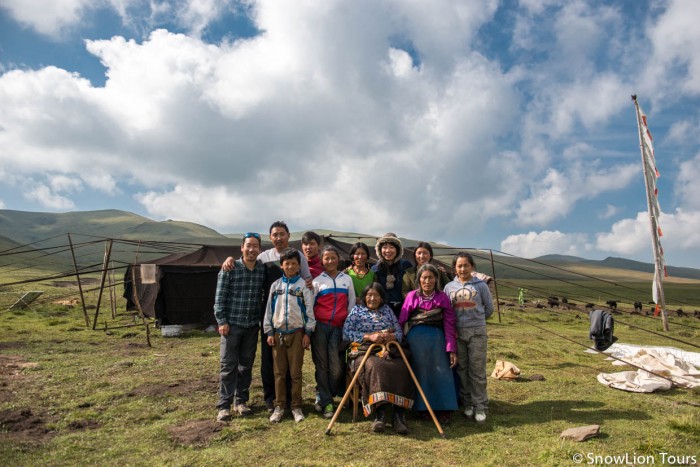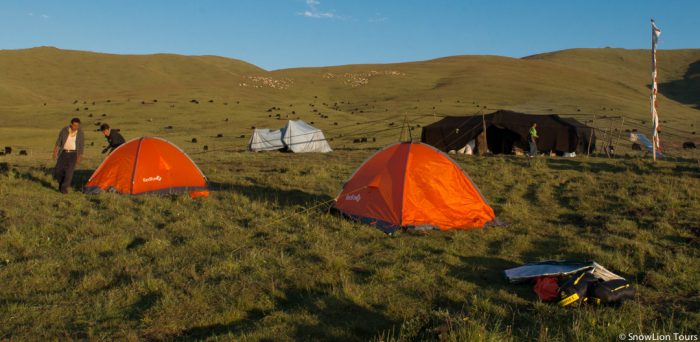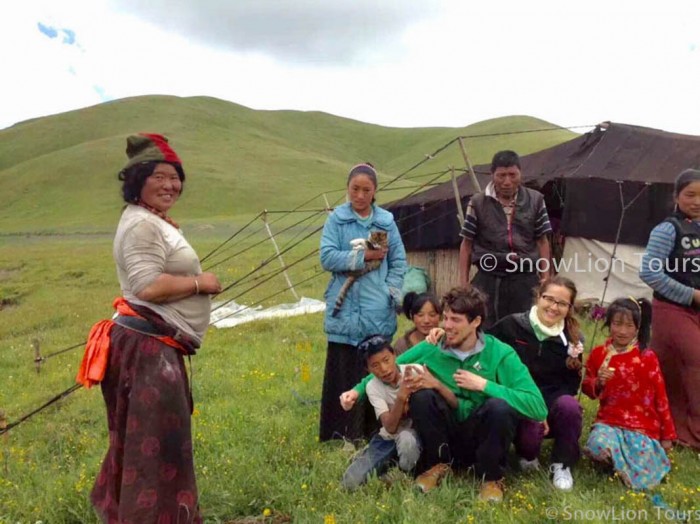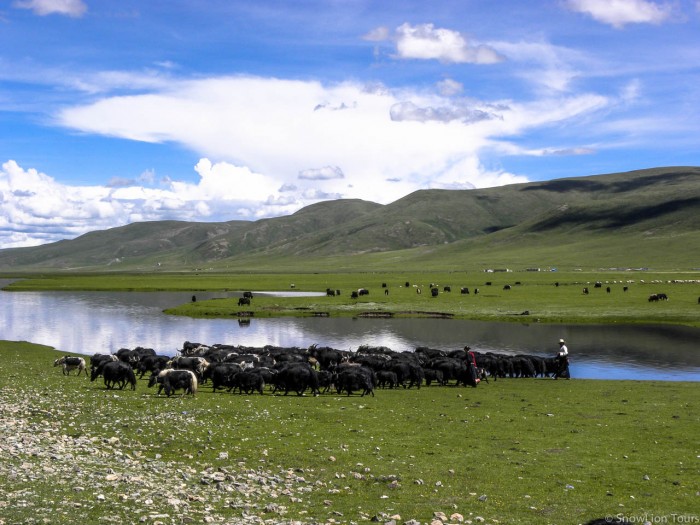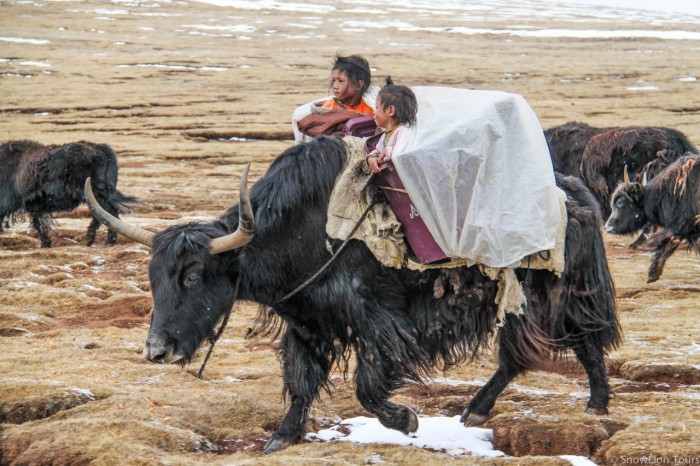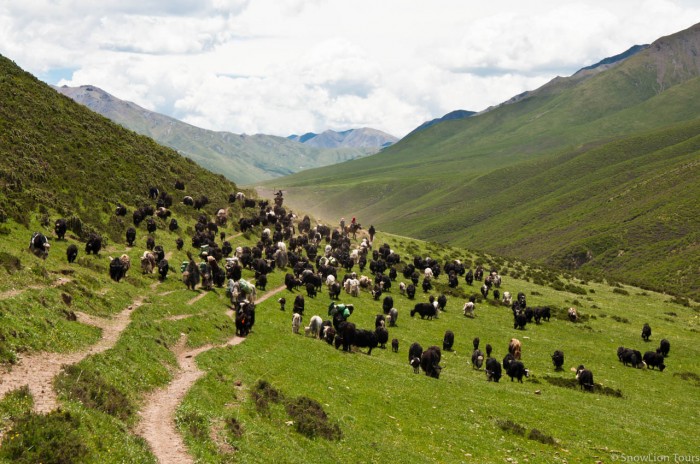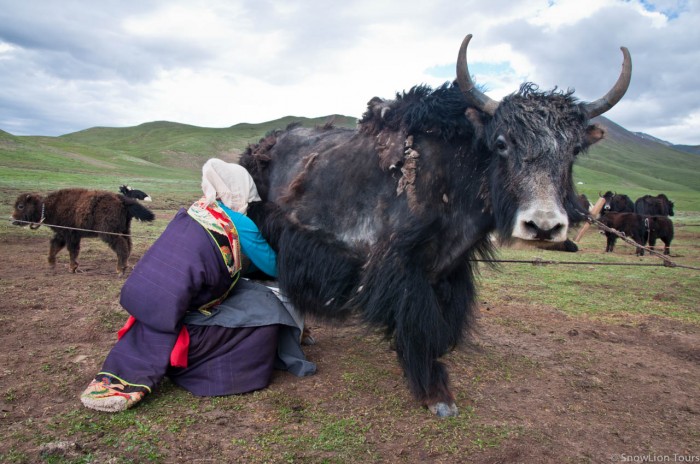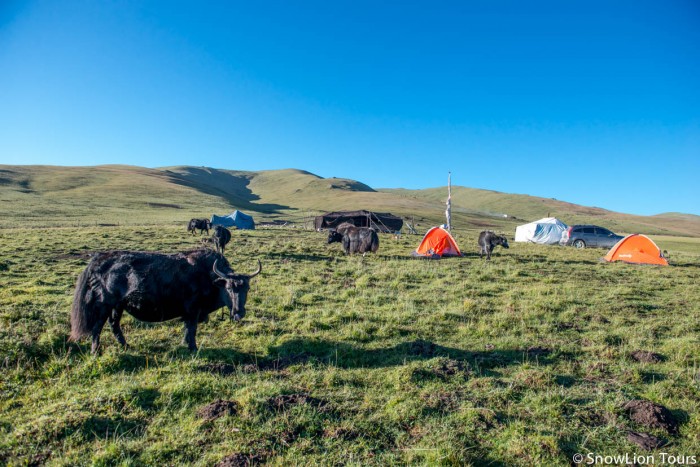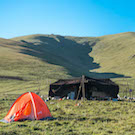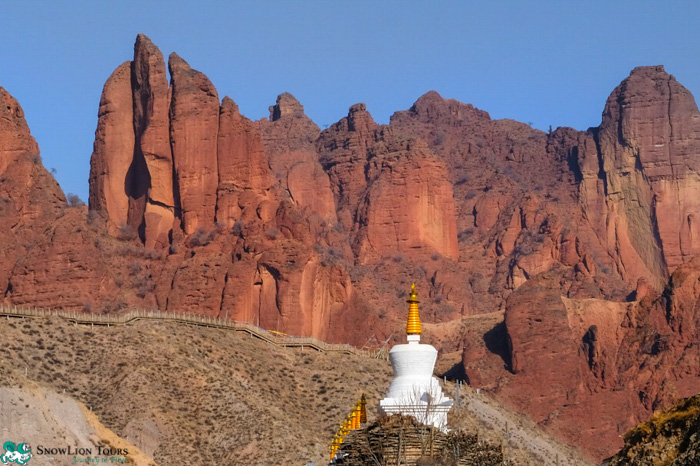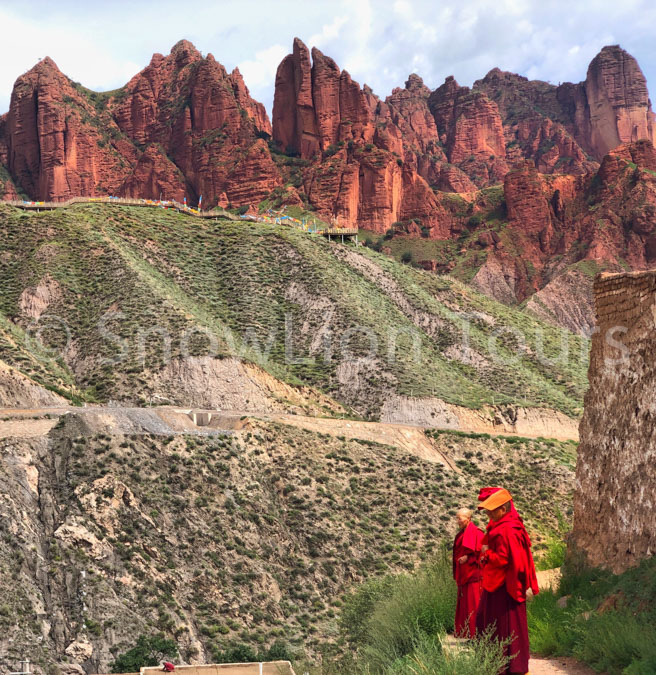Day 1: Xining – Shachung Monastery – Lo Dorjee Drak Cave – Rebkong [2480m] 230km
Today, we will head towards the east for about 110 km to visit Shachung Monastery. Shachung Monastery located on a giant cliff at the bank of Yellow River. You can see the bends of Yellow river in a vast open valley. Shachung is famous for being the first monastery of Je Tsongkhapa – the great master of Tibetan Buddhism. Je Tsongkhapa received his first monastic vows and spent all his youth in this monastery before his journey to Central Tibet.
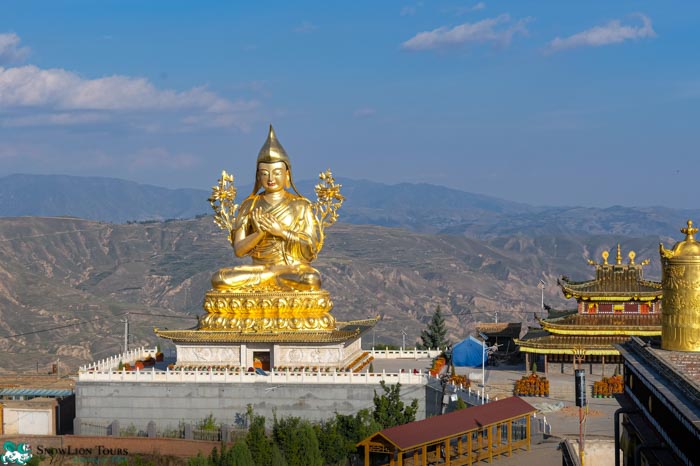
Je Tsongkhapa’s statue in Shachung Monastery.
Then we will descend into the valley by driving another 18 km along the Yellow River’s banks to our second stop – Lo Dorjee Drak Meditation Caves. Lo Dorjee Drak consists of a small monastery and many meditation caves located beneath a giant cliff at the bank of Yellow River. This place is where great yogis and practitioners meditated over many centuries. If you are into meditation, it is a powerful place to spend some time meditating inside an ancient cave. Afterwards, we will drive to Tongren (Tib: Repkong) through a newly built highway built in the midst of the deep valley. Repkong is not only home to many Buddhist and Bon monasteries but also the heart of traditional Tibetan Art. We will stop to visit two famous monasteries Senggeshung Yagol (Upper Wutun si) and Senggeshung Magol (Lower Wutunsi) to see sacred statues and Tibetan traditional thangkas paintings. Rebkong thangkas are the most famous thangkas in the whole of Tibet.
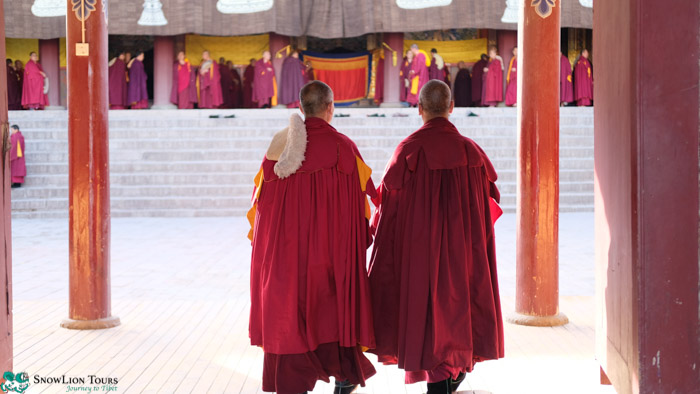
Two monks are entering the debating season in Rongwo Monastery.
Day 2: Rebkong – Mayshul Forest – Tsekog grassland – Camp Site [3660m] 150km
In the morning, we will visit Rongwo Monastery which is the largest monastery in this region with 35 branch monasteries scattering around the Rongwo Valley. Originally founded as a Sakyapa Monastery with about 1000 monks at the peak of its power. Today it belongs to the Gelug tradition and still hosts more than 400 monks. Afterwards, we will continue driving to the southwest through the Mayshul Forest, a virgin forest about 50km west of Tongren. After a drive on a zigzag mountain road, the landscape becomes vast and wide. Here, we will enter the nomadic region. We will see many yaks and sheep on both sides of the road. Our guide will find a nice place near Tibetan nomadic families to camp right next to them. If you are into night photography, you will have a great opportunity to shoot stars in the clear night sky.
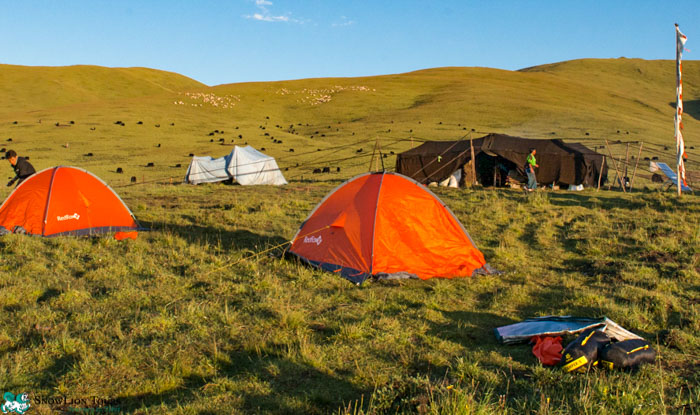
Camping with Tibetan nomads.
Day 3: Camping with Nomads and Explore Nomadic lifestyle – Guide (1800m) 210km
Firsthand experience of Tibetan nomadic lifestyle. You can join nomads to herd their yaks and sheep or to make cheese, yogurt, and butter. We will have a whole day to observe nomadic daily works such as milking yaks, caring for newly born little yaks, herding yaks and sheep, cooking on a typical nomadic fire stove, exchanging life stories with local nomads. W may also have a chance to ride a horse or even to try riding a yak! We will also hike up on a hill or just walk on grassland to have some quiet and beautiful time. In the late afternoon, we will drive to Guide – a beautiful town located on the banks of Yellow River.
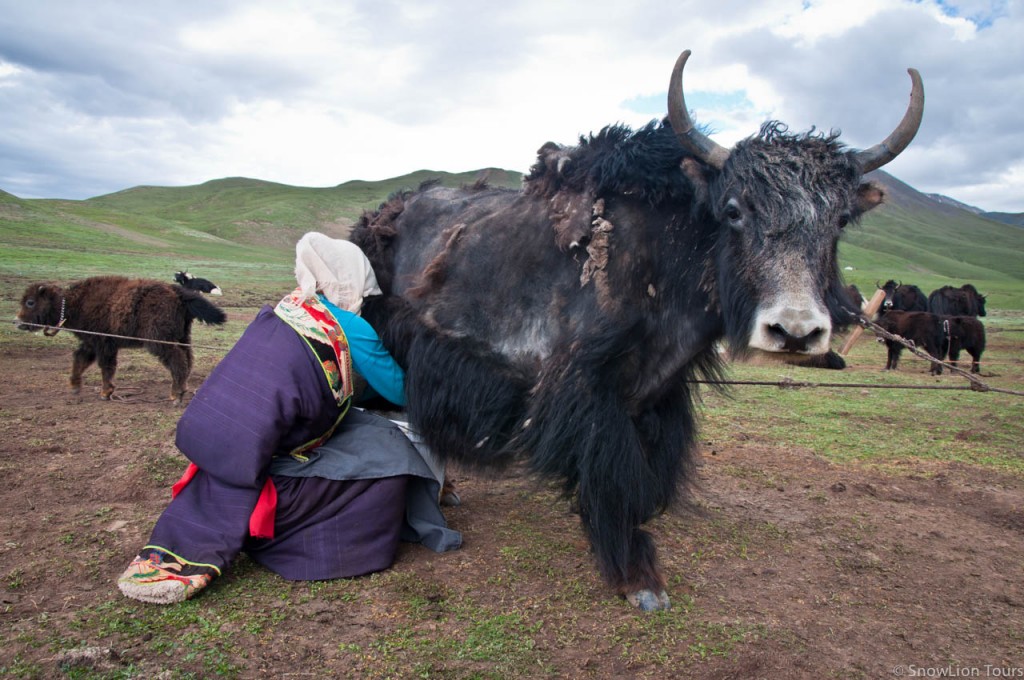
one Tibetan girl milking a yak, most Tibetan nomads live and depends on yaks. Nomads use yak hair to make tent, settles, clothes.etc. and use milk to make butter, cheese, yogurt.etc.
Day 4: Guide – Achung Namdzong Nunnery – Kanbula National Park – Xining 190km
In the morning, we will drive to Kanbula National Park. This park offers one of the most beautiful sceneries in the area, including canyons, red clay peaks, colourful mountains, forests, and a gorgeous turquoise lake. Here, we will spend a few hours hiking between the towering red clay mountains, where we can pay a visit to the meditation cave and a small nunnery.
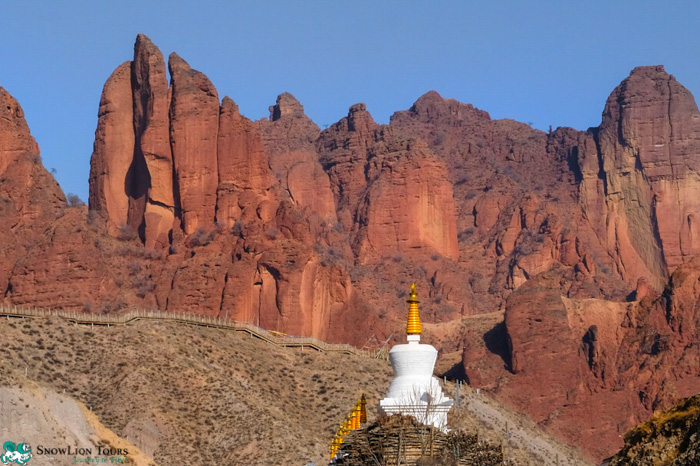
White stupa among the red mountains in Kanbula National Park.
Afterwards, we will drive up to the Tibetan villages, from where we can see another highlight of the Kanbula national park – a vast turquoise lake deeply nested in this vast valley. There are several places to stop while descending from the villages back to the town. Finally, we will drive back to Xining.
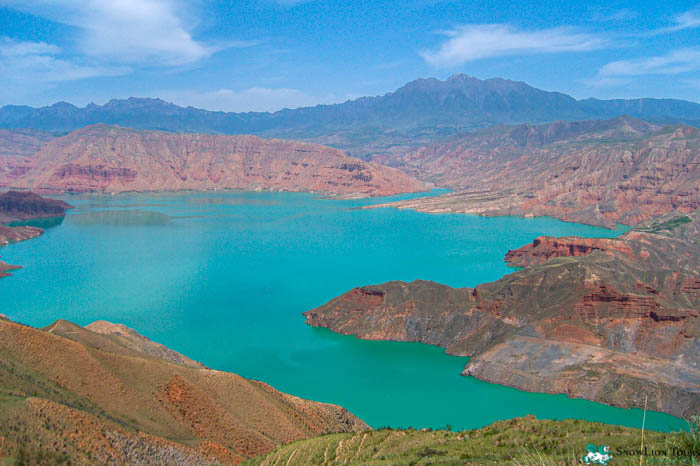
The turquoise Lake inside Kanbula National Park.




